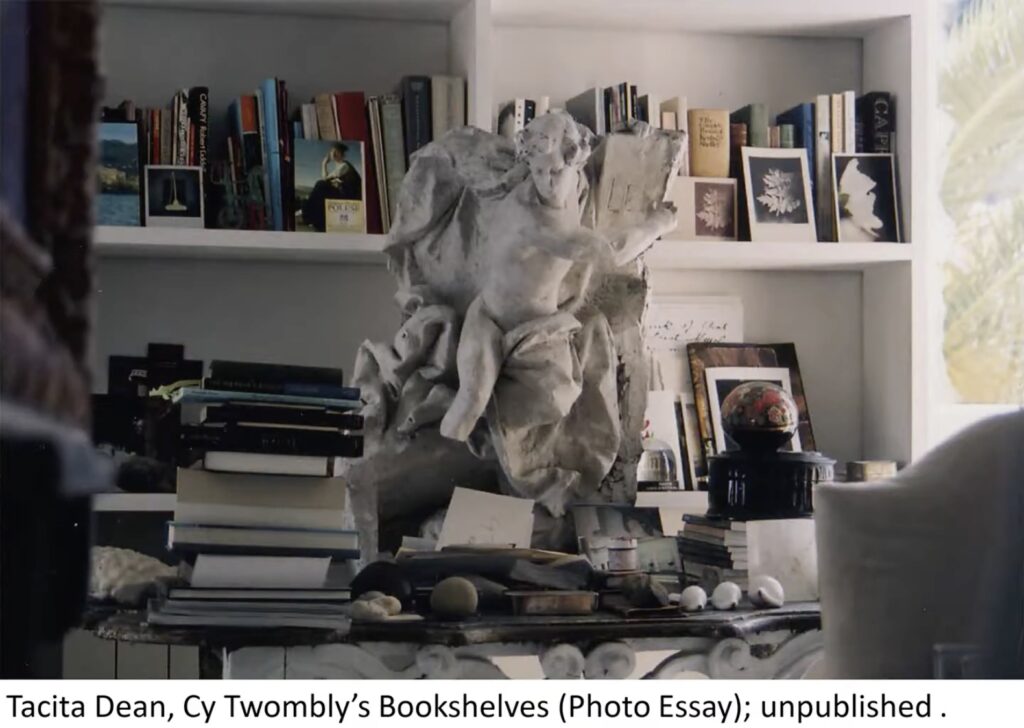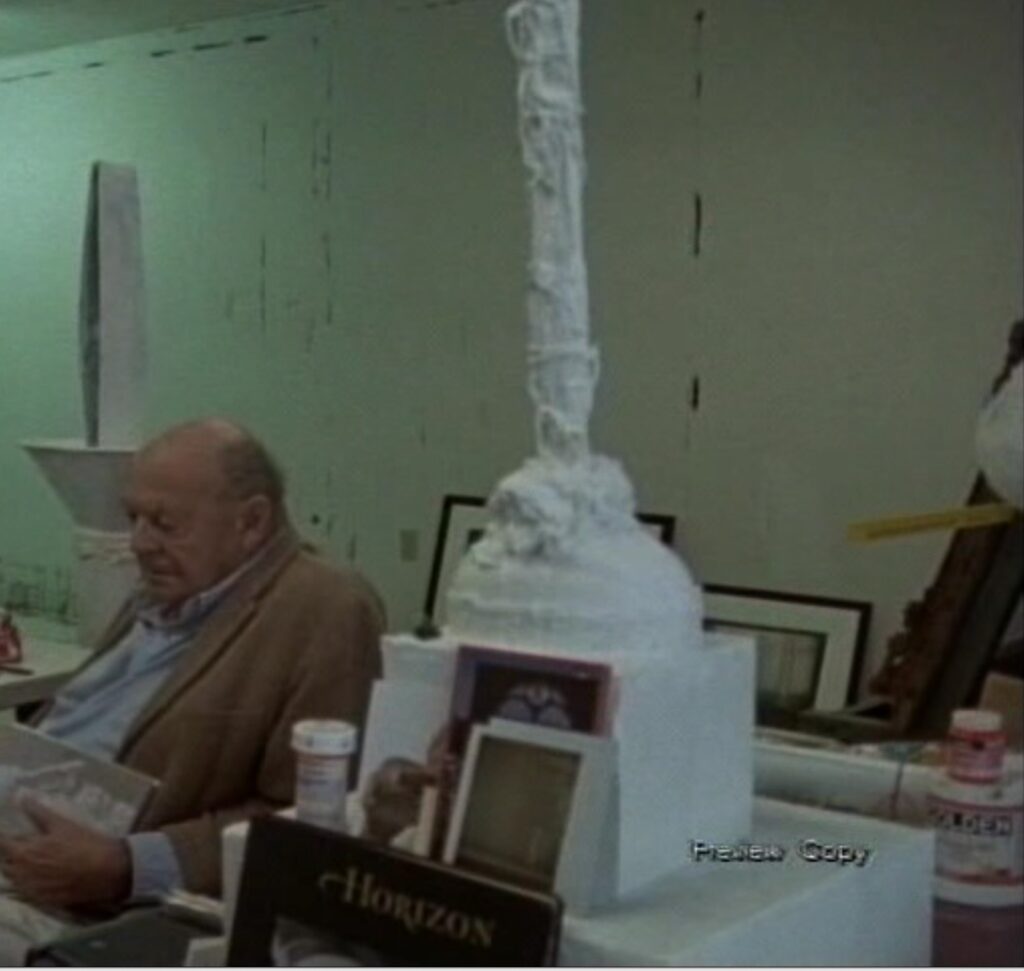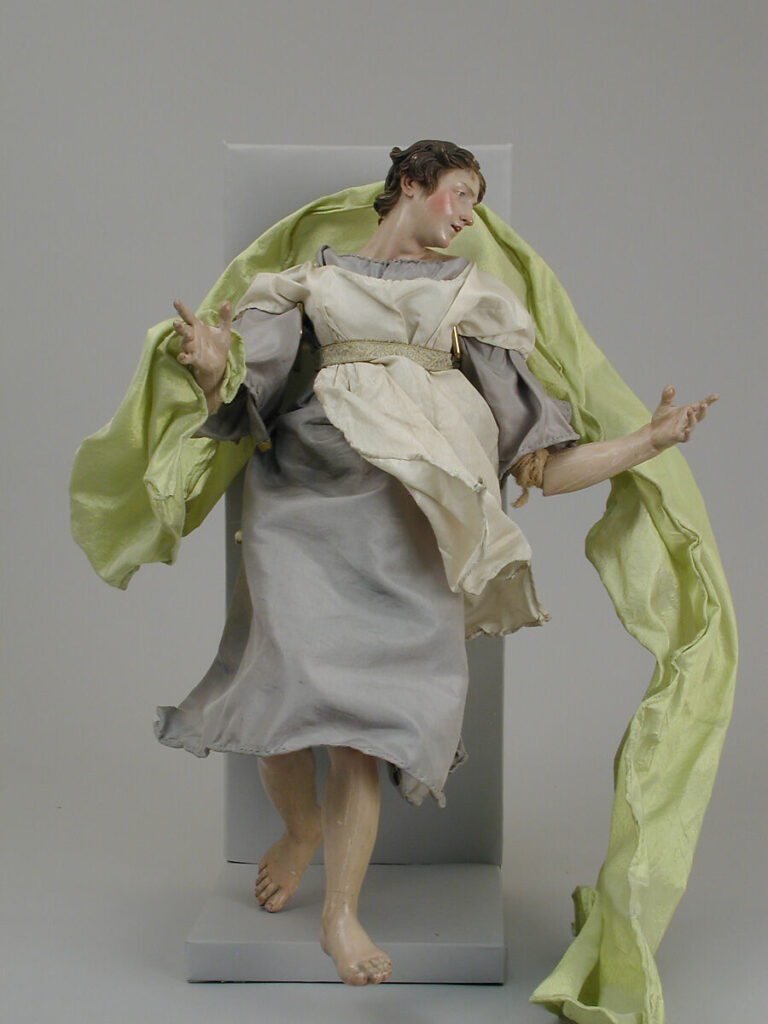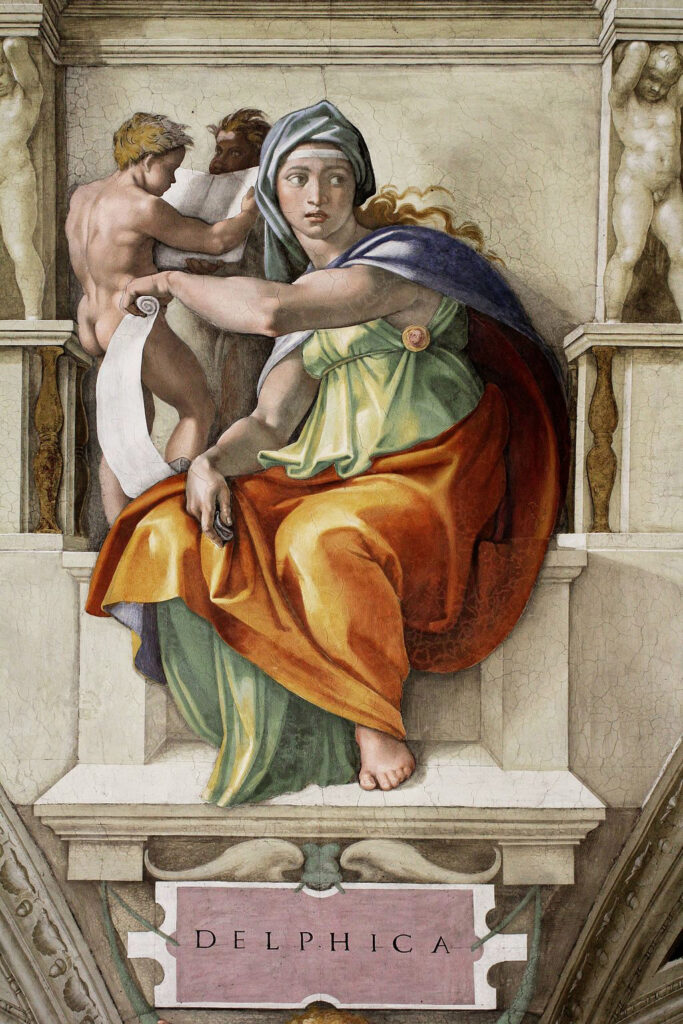
Didn’t think anything of it the first time, but this summer when I watched Mary Jacobus’ 2016 talk at Cornell’s Olin Library about her then-new book, Reading Cy Twombly: Poetry in Paint, I was intrigued by this Tacita Dean photo of Twombly’s library, and wanted to know what this sculpture is.
Maybe I noticed it because Dean’s 2008 photos of Gaeta had since been exhibited publicly, at the Fondazione Nicola Del Roscio in 2021-22. [Frith Street Gallery has the writeup in English.] Dean had asked Twombly to help select 50 pictures for a photo essay in the catalogue for his 2009 show at MUMOK in Vienna. Prints of these 50, plus one more (a detail of Giorgio Morandi’s workspace), were shown alongside Edwin Parker (2011), Dean’s quietly observant film portrait of Twombly, shot in Lexington, Virginia in late 2010, not long before his death.

I’ve always loved how Dean captured how Twombly’s sculptures existed in his cramped, storefront studio, thoroughly embedded in life, arrayed with meds, mail, and bulldog clips. Which is exactly how Twombly installed [sic] the classical figure on the console table in his library.
Or as Jacobus described it, “the so-called library,” which was also (?) “the room where Twombly slept. Three walls were covered with art books, and this one, the fourth, with literature and poetry. She explained that Dean didn’t publish this image because it had a blurry spot on the side. Dean is fluent in blur, so we must defer. But about the sculpture:

Jacobus called it a “flying sculpture,” which, yes and no. What might look like angelic wings are actually very exuberant drapery, which the twisted, nude figure with a tablet is just about to escape completely. I’ve come back to this sculpture several times this year, trying to identify it, and it’s only now, at Christmas, that I see drapery that wild. Except it’s actually fabric, on the 18th century Baroque Neapolitan crèche figures on the Christmas Tree at the Met. The pose, meanwhile, feels like someone knew the Sibyls on Michelangelo’s Sistine Ceiling.

So I’ve been rummaging around in Italian sculpture fragments, plaster ornaments, pediment sculptures, it says LE[X?] on that plaque, is he an allegorical figure bringing the law? But does it, though?

Because now I think it says “LEE.” Is that somehow related to the former president of the college Twombly attended, in the Virginia town he grew up in, and to which he returned later in his life? Because that would be Robert E. Lee, who is indeed buried along with much of his family and his horse on the grounds of what became Washington & Lee University. These are the Lees I’ve found so far; I would very much love to find others, and to learn that Twombly rescued this statue from their home renovation, or even their gravestone toppling, rather than that he schlepped a melodramatic Lost Cause beefcake statue to Italy to put over his library bed.
[Day Later Update: Of course, maybe the answer lies in the 2019 book, Cy Twombly: Homes & Studios, which contains 136 images compiled and edited by Lothar Schirmer, and an account of the featured locations by Twombly’s longtime collaborator Nicola Del Roscio, in which the pictured locations are revealed as unique repositories of art, antiques, and furniture, and as sanctuaries for their late resident’s creative expression. Re-read this description and buy the book at Gagosian Shop.]
[2025 update: Luxurious as it is, the answer does not lie in this book.]
Book Talk: Mary Jacobus — Reading Cy Twombly: Poetry in Paint [youtube]
Mostra Tacita Dean the show was called Sigh, Sigh, Sigh btw, love that for her [fondazionenicoladelroscio.it, frithstreetgallery.com]
Previously, related: 2022 discussion of Edwin Parker in Chain Thiebaud
